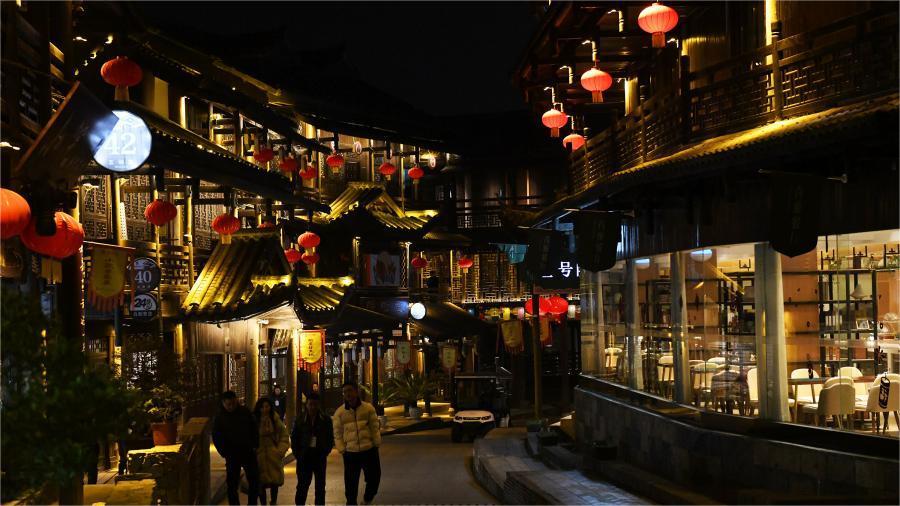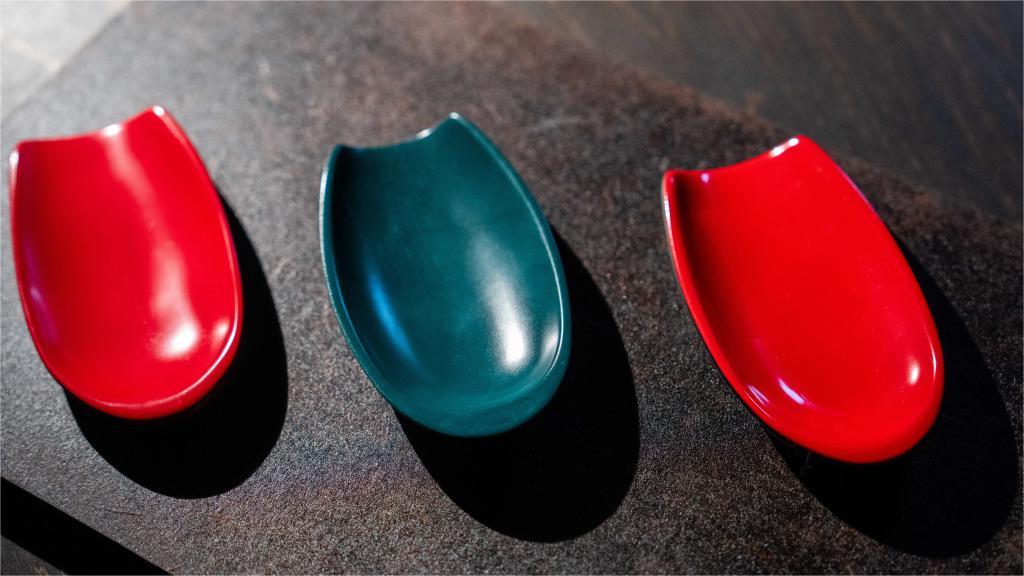Feature: Passing down language without writing system to schoolkids in Miao ethnic village
CHONGQING, March 1 (Xinhua) -- "This is the word we are going to learn today, repeat after me -- bad ghot gheab (pronunciation as reflected by the Latin alphabet)," said Wu Jing as she uttered the Miao language word for rooster with exaggerated mouth movements, while teaching dozens of third-graders.
In the school building distinguished by its Miao ethnic group architectural style, students of Minzu Primary School were gathered following their winter break. Those in Wu's class were greeted by their teacher in the Miao language.
Minzu Primary School is located in Minzu Village, Meijiang Township, Xiushan Tujia and Miao Autonomous County in southwest China's Chongqing Municipality which borders Guizhou and Hunan provinces -- the two provinces with the largest Miao population in China. Meijiang Township has an ethnic minority population amounting to about 70 percent of its total population, with most of its ethnic minorities being Miao and Tujia people.
Minzu Village is the only village in Chongqing where the Miao language has been completely preserved. The Miao language curriculum is a distinctive course offered by Minzu Primary School.
Wu wrote down a string of Latin letters on the blackboard and asked the students to pronounce the words. "The Miao language does not have a writing system, which poses difficulties in teaching the language. Therefore, the textbook adopted the Latin alphabet to mark the consonants, vowels and intonation of the language," Wu told Xinhua after the class.
Raising his right arm to indicate his desire to speak in class, Chen Shuai, a student who belongs to Han ethnic group, scrambled to read out the Miao words for "chopping the firewood.""It's peab deul," Chen said with a smile on his face. "Miao language class is my favorite, the language is cool and it's fun to learn it too."
For Long Haolin, a student of Miao ethnic origin, learning the Miao language amounts to more than a penchant for novelty, but represents a deeper connection with his cultural traditions, and more importantly, with his family. "My grandma speaks the Miao language, and I want to be able to master the language and communicate with her in the language one day," the 9-year-old said.
According to Wu, the teaching focuses on everyday language so that students find greater fun and ease in learning. To ignite the enthusiasm of students, she created Miao language jingles to praise the outstanding students.
The Miao language, belonging to the Miao-Yao language family, boasts a long history. Devoid of a writing system, it is passed down by word of mouth. "I used to be a student at Minzu Primary School. At that time, my fellow students all spoke the Miao language, so I learned to speak the language at school," said Wu.
Today, although the village elders still often speak the Miao language, the younger generation, due to leaving the village to seek employment and education, has become more accustomed to communicating in Mandarin, Wu said.
A native resident of Minzu Village, Wu returned to her hometown to teach in the primary school after graduating from a teaching college.
Minzu Primary School has provided bilingual teaching since the 1950s, but the Miao language teaching efforts there tended to rely purely on personal experiences, lacking standardized guidance.
In 2011, the school dispatched a team of Miao language teachers to Hunan and Guizhou provinces to learn better practices for Miao language teaching. Following the study tour, the teachers compiled three volumes of a "Miao Language Textbook," thus ushering in a new stage of standardized bilingual teaching in Minzu.
Apart from preserving the language of the Miao people, Minzu Primary School has also integrated elements of Miao ethnic culture, such as Miao dances, drum playing and handicraft making, into the school's extracurricular activities.
The school's efforts in boosting ethnic culture education are in line with a broader initiative of the Xiushan Tujia and Miao Autonomous County to pass down and highlight its cultural heritage, including preserving villages with ethnic minority group characteristics, renovating ancient towns and traditional dwellings, and hosting training sessions concerning intangible cultural heritage, such as Tujia brocade and Miao embroidery.
Photos
Related Stories
Copyright © 2024 People's Daily Online. All Rights Reserved.









